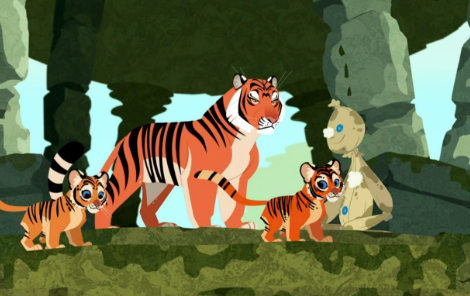Exploring the Wild Kratts and the Majestic Bengal Tiger
The Wild Kratts is an educational children’s animated series that captivates viewers with its thrilling adventures and fascinating animal facts. With a focus on wildlife conservation, the show introduces the Bengal tiger, one of the most iconic and endangered big cats in the world. Understanding these majestic creatures is vital for raising awareness about their plight and the ecosystems they inhabit.
The Magnificent Bengal Tiger
The Bengal tiger is renowned for its striking orange coat with black stripes, making it one of the most recognizable animals on the planet. Native to the Indian subcontinent, these tigers primarily inhabit forests, grasslands, and wetlands. They are solitary creatures, relying on stealth to hunt prey such as deer and wild boar. Unfortunately, habitat loss, poaching, and human-wildlife conflict have led to a significant decline in their population, with fewer than 2,500 Bengal tigers remaining in the wild. Highlighting their beauty and importance is essential for fostering a sense of urgency for their protection.
Wild Kratts’ Educational Impact
The Wild Kratts series plays a crucial role in educating children about wildlife, including the Bengal tiger. Through entertaining storylines and character-driven adventures, the show emphasizes the importance of biodiversity and conservation efforts. By following the Kratt brothers as they explore jungles and engage with animals, young viewers learn key concepts about habitats, ecosystems, and the significance of protecting endangered species. The engaging content not only captivates children but also ignites a passion for wildlife conservation.
Conservation Efforts for the Bengal Tiger
Conservation organizations and initiatives are crucial in protecting the Bengal tiger and its habitat. Efforts include habitat restoration, anti-poaching programs, and community engagement to promote coexistence between humans and wildlife. National parks, such as the Sundarbans and Ranthambore, provide safe havens for these tigers to thrive. Programs aimed at educating local communities about the ecological role of tigers foster understanding and encourage protective measures. Supporting these initiatives can help ensure a future where Bengal tigers roam freely in their natural habitats.
Conclusion
The Wild Kratts and the Bengal tiger serve as powerful tools for educating the next generation about wildlife and conservation. By fostering a curiosity for animals and an understanding of their challenges, we can inspire young minds to take action. Explore more about these magnificent creatures and consider supporting conservation efforts to make a difference in their survival. Let’s work together to ensure that future generations can experience the awe of seeing Bengal tigers in the wild!

